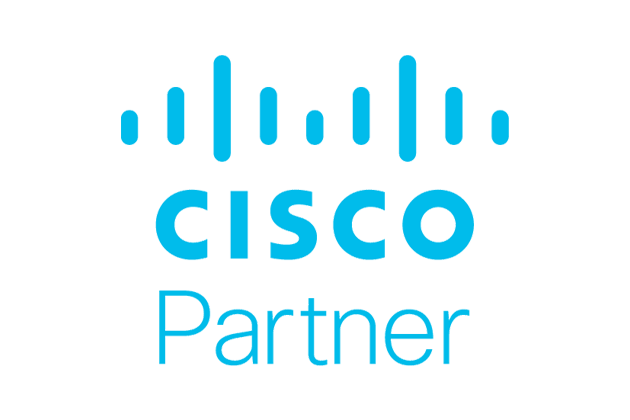As we move deeper into 2025, attackers have only become more resourceful, and the lines between “inside” and “outside” your organisation are blurrier than ever. Australian enterprises are juggling hybrid workforces, sprawling cloud environments, and the meteoric rise of AI investments, all while trying to keep cybercriminals at bay. So, what does cyber resilience actually mean today when it comes to keeping your cloud/data centre secure, and what strategies truly hold up in the heat of real-world attacks?
The silent risks hiding in your environment, and how to expose them
Most environments, especially those rapidly evolving with the latest tech,have a handful of “silent risks” lurking just out of sight. AI is one such evolution that has the potential to introduce new threats along with its benefits. Chris Gacoigne, Principal Solutions Engineer, APJC Cloud and AI Infrastructure at Cisco, highlights the importance of using modern industry solutions to increase readiness in an environment that shows a genuine lack of readiness as identified in a recent comprehensive report commissioned by Cisco.
Protecting your emerging investments:
How to safeguard your Data Centre and AI environments
Modern data centres in Australia are the beating heart of digital transformation. But whether you’re running on-prem, hybrid or colocation, there are some key steps that can help you protect your infrastructure investments.
Cameron Harding, Compute and Storage Principal Architect at Outcomex, identifies adherence to security frameworks, modern real-time incident detection along with immutable copies of data as being valuable areas of focus for modern infrastructure resilience.

“[value of] Frameworks in place such NIST (a global Framework) and Australia’s ISM …. most of those frameworks include the requirement to have immutable copies of data as a last line of defence.
It is also important to be able to detect an incident. Now there’s additional capabilities that are being introduced allowing scanning real-time file storage and different storage platforms within an organisation so that you can react to a breach or an outbreak in real-time. Lastly, having something in place that can not only detect a breach or an outbreak, but also autonomously prevent or limit the impact of that outbreak is very important.”How security strategies are evolving in response to increasingly hybrid and remote workforces
Chris touches on the paradigm shift of segmentation not only between workloads, but also across hybrid access points and user profile segmentation to provide adequate insulation across the modern environment.
“Cisco was very early with our ACI solution for micro segmentation of data centre workloads to isolate any breach to only the affected workload. The trend of hybrid and remote workers what is forcing organisations to think more about security and segmentation as an end-to-end proposition. How do I make sure that an end user gets access only to what they need, but from wherever they happen to be via VPN – whether that’s in a branch on Wi-Fi in a campus on wired, their home office, in all these different locations. Making sure they have the consistent access but also restricting them to the same access roles in all of those different locations.”
Shifting your security approach to be proactive vs reactive is extremely important before the next breach. A few crucial key steps can provide a critical edge in reducing the time to respond to a threat or to even avoid the threat altogether. The two below points are establish a baseline for ‘known good’ or “know what normal looks like”:
- Put modern, real-time monitoring in place to detect deviations from established base-line.
- Move the enforcement point closer to the workloads to reduce response time.
Explains Chris: “…to be proactive in your security approach you first need to know what normal looks like. Things like observability Solutions are really, really important so to get that proactiveness and then start to detect when there are anomalies quickly in order to respond to those.
“ Another thing from a proactive perspective specifically in the data centre is around moving the enforcement point for security decisions closer to the workloads and the intelligence of those security decisions closer to the workloads because that lets you respond to issues more rapidly because you don’t have to wait for a policy change to be pushed down from the management system. For example, a solution called hyper shield which does exactly that, and it actually moves the Security Intelligence and security enforcement Point right down either into the workload in many instances in the container into the virtual machine.”
Wrapping Up: Cyber Resilience as a Way of Life
The reality is that cyber resilience in 2025 is a continuous journey, not a final destination. Australian enterprises can’t afford to settle for reactive security or half-baked solutions. By exposing silent risks, protecting new tech investments, framework adherence, modern real-time monitoring and implementing micro-segmentation that extends across hybrid teams environments, you can make your security posture not just stronger, but smarter and more adaptable.
Stay proactive, stay curious, and never underestimate the value of a healthy dose of cyber paranoia. The threats will keep changing, but so can your business.

As a Cisco Gold partner, we have a deep understanding of the entire Cisco portfolio and are dedicated to pass our experience on to our customers, making sure they receive the best product recommendations and services to meet their requirements.
We are honoured to have been named Cisco’s ANZ Partner of the Year in 2023 and take great pride that we are one of only three ANZ partners that are Cisco Master Security Certified.
Want to learn how you can increase your security posture?




